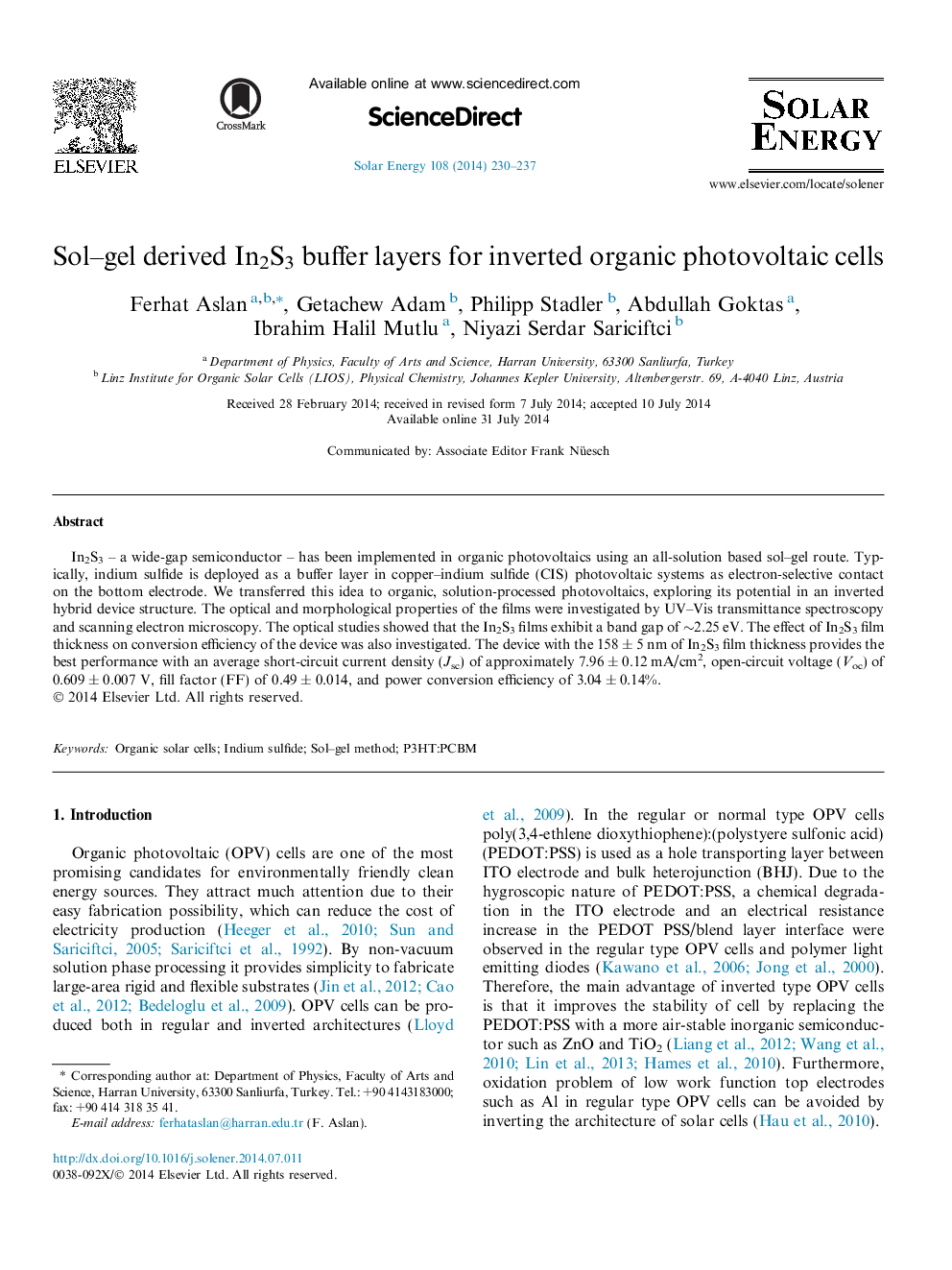| Article ID | Journal | Published Year | Pages | File Type |
|---|---|---|---|---|
| 1549877 | Solar Energy | 2014 | 8 Pages |
•Non-vacuum sol–gel prepared In2S3 thin films.•In2S3 has been implemented in organic photovoltaics using a sol–gel route.•A conversion efficiency of 3.04 ± 0.14% was observed for the inverted solar cell.
In2S3 – a wide-gap semiconductor – has been implemented in organic photovoltaics using an all-solution based sol–gel route. Typically, indium sulfide is deployed as a buffer layer in copper–indium sulfide (CIS) photovoltaic systems as electron-selective contact on the bottom electrode. We transferred this idea to organic, solution-processed photovoltaics, exploring its potential in an inverted hybrid device structure. The optical and morphological properties of the films were investigated by UV–Vis transmittance spectroscopy and scanning electron microscopy. The optical studies showed that the In2S3 films exhibit a band gap of ∼2.25 eV. The effect of In2S3 film thickness on conversion efficiency of the device was also investigated. The device with the 158 ± 5 nm of In2S3 film thickness provides the best performance with an average short-circuit current density (Jsc) of approximately 7.96 ± 0.12 mA/cm2, open-circuit voltage (Voc) of 0.609 ± 0.007 V, fill factor (FF) of 0.49 ± 0.014, and power conversion efficiency of 3.04 ± 0.14%.
